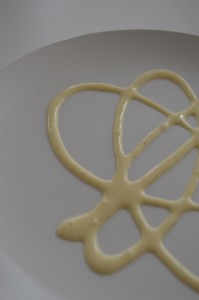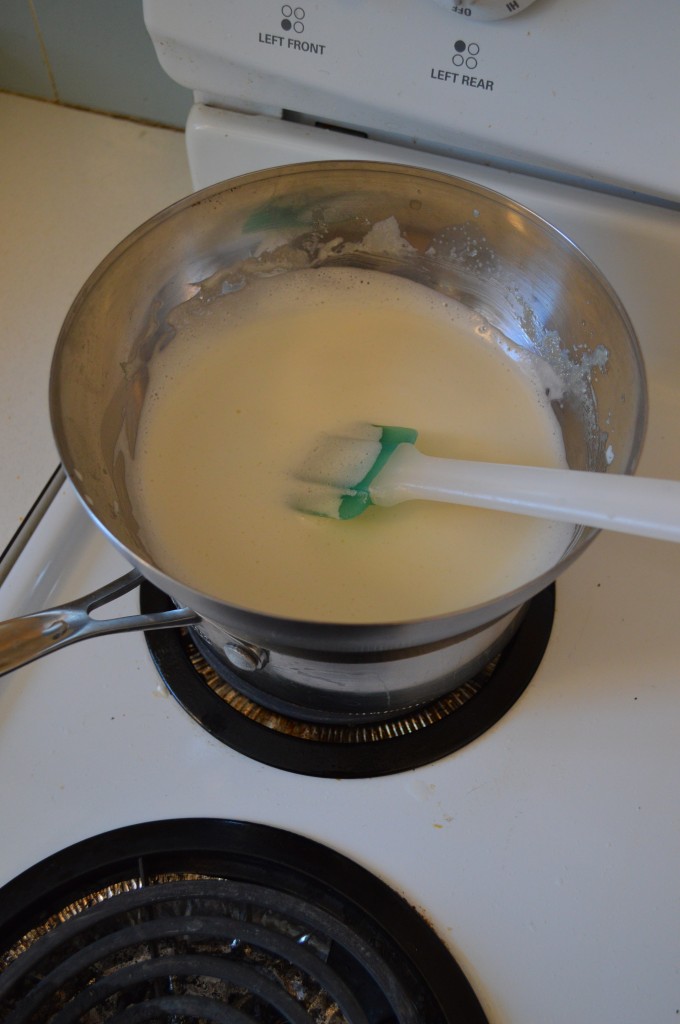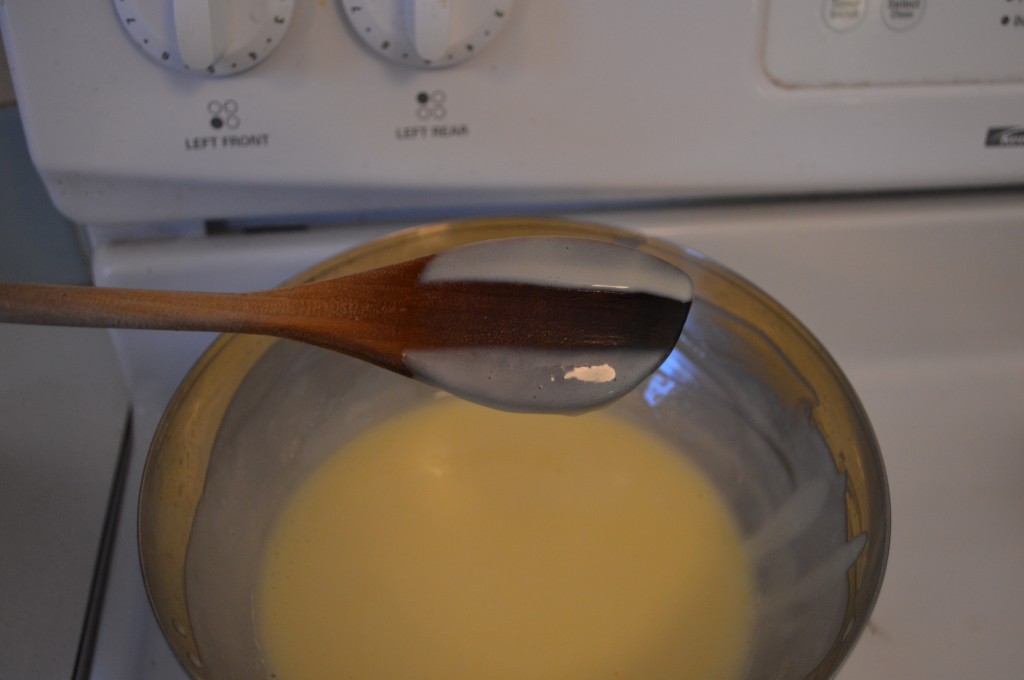 The French name for this custard sauce is crème anglaise, which means “English cream.” À l’anglaise is a descriptor given to many preparations in classic French cuisine. It is in fact mildly derogatory, as it always describes the most basic of preparations. For instance, vegetables prepared à l’anglaise are boiled, then served with butter and parsley. Meat dishes prepared a l’angaise are also always boiled. And crème anglaise is the most basic of dessert sauces, a pourable custard flavoured with vanilla.
The French name for this custard sauce is crème anglaise, which means “English cream.” À l’anglaise is a descriptor given to many preparations in classic French cuisine. It is in fact mildly derogatory, as it always describes the most basic of preparations. For instance, vegetables prepared à l’anglaise are boiled, then served with butter and parsley. Meat dishes prepared a l’angaise are also always boiled. And crème anglaise is the most basic of dessert sauces, a pourable custard flavoured with vanilla.
So yes: this sauce is considered very ordinary within the context of classic cuisine. It is not usually a featured component, but an accompaniment, an afterthought.
After initial preparation, crème anglaise can go on to become a number of more dignified dishes, like crème brûlée, or even ice cream. But more on that later.
The classic method of preparation is to scald a milk-cream-vanilla mixture, temper eggs and sugar with the hot liquid, then cook the entire mix until it thickens ever so slightly. While experienced pastry cooks can comfortably cook custard sauce on a stove top, it is much safer to cook it over a double boiler.
A double boiler is just a pot of simmering water over which sits a stainless steel bowl containing the mixture to be cooked. Steam rises from the water, gently heating the bottom of the bowl above. Stainless steel is preferred for the bowl as it is a good conductor. The double-boiler cooking method is much gentler than having the mixture directly in the pot. As discussed in the introductory post on custards, gentle cooking gives us a wide window of time during which the custard is properly cooked and mitigates the risk of over-cooking and curdling the dish.
Though this is emphatically not traditional, you can actually prevent curdling in your custard sauce by adding a bit of flour or cornstarch to the mix. The effects of starch in a custard will be explored tomorrow when we make pastry cream.
I recommend trying to cook custard sauce without the addition of starch at least a few times. It’s a valuable exercise in recognizing nappé consistency. Napper is a French word meaning “to coat, or cover”. It is used to describe the correct viscosity of sauces, whether those sauces are thickened with eggs, or roux, or a stock reduction. They should coat the back of a spoon, and you can draw a line in the sauce with your finger that stays well after your swipe. Like so:
Custard sauce will thicken further as it cools. As you can see in the picture at the top of this post, the sauce should stand up when drizzled onto a plate.
Custard Sauce
Ingredients
- 4 oz whole milk
- 4 oz cream
- 2 oz egg yolk (the yolks from 4 eggs)
- 2 oz granulated sugar
- 1 tsp vanilla paste
- pinch of salt
Procedure
- Set up a double boiler on the stove.
- Combine milk, cream, and vanilla in a heavy stainless steel pot. Bring to a simmer.
- Meanwhile, whisk together the egg yolks, sugar, and salt in a bowl until the sugar has dissolved.
- Once the milk and cream have come to a boil, slowly pour into the yolk mixture while stirring rapidly with a rubber spatula.
- Transfer the entire mixture to the double boiler. Cook while constantly stirring with a rubber spatula until nappé consistency is reached.
- Immediately transfer the sauce to another container to slow the cooking process.
Yields just over 1 cup of custard sauce

